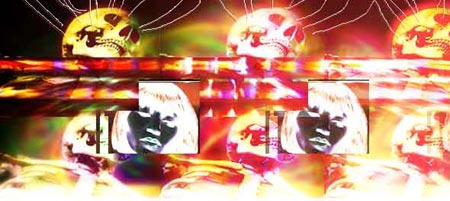BY LETTER
Svalbard Transap, The
History > 0030 to 0900 AT: Solsys Era > 530 to 900 AT: The Sundering
Culture and Society > Myths and the Unexplained > Myths and Rumours
Culture and Society > Myths and the Unexplained > Myths and Rumours
Mythical transapient believed by some to have been involved in the Technocalypse |
 Image from Bernd Helfert |
There are a variety of conspiracy theories surrounding the Technocalypse era. One of the more common tropes involves some sort of behind-the-scenes manipulator, an updating of early conspiratorial memes such as the Illuminati, Freemasons, and Daves. Certain forms of analysis of the settlement of Phobos indicate a number of unusual coincidences, which is taken by some theorists as the signature of the influence of a particular hypothesized entity. Due to one of the coincidences having a geographical component, involving the locations of the four main patrons of the Phoboan settlement effort, leading to a fifth location between those four, the Svalbard archipelago north of Scandinavia, and the level of mentality required to accomplish many of the feats attributed to er, e has generally been referred to as 'The Svalbard Transap'.
There is no hard evidence for the existence of such a being; and there are a wide variety of descriptions of er, and er actions, most of which are mutually contradictory. (Some theorists take this very lack of evidence as itself being further evidence for the Svalbard Transap's existence.) Subsequent theorists have suggested that e was behind the Technocalypse, that e foresaw the disaster and worked to avoid it, or to ameliorate its effects, or to spread terragenic culture beyond the effects of a solsys-wide disaster through the Packrat Spores; to have arranged for the emergence of GAIA, or predicted it; to still be in Svalbard, or on Phobos, or merged into GAIA, or any number of other fates.
Whether or not e ever actually existed, the rumours of er existence led to er being included in a variety of period fiction, becoming a background part of the culture much like earlier rumoured beings such as 'Bigfoot', 'Nessie', and 'Elvis'. Such fictional portrayals have led to the creation of actual beings based on the myths and conspiracy theories, such as in the Auster Library.
Related Articles
Appears in Topics
Development Notes
Text by Daniel Eliot Boese
Initially published on 31 January 2011.
Initially published on 31 January 2011.






